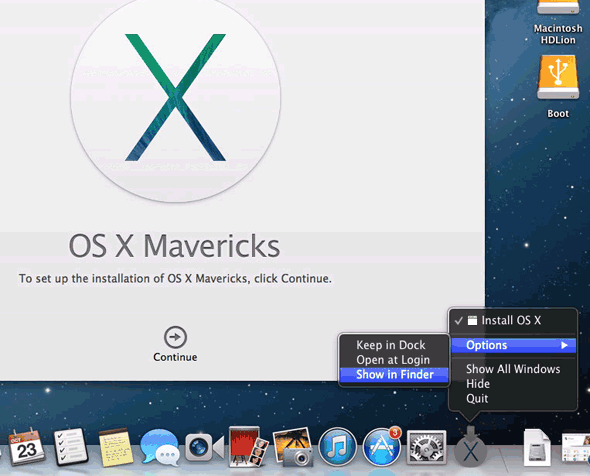
Once run you’ll see that it erases the disk, copies the Installation materials (InstallESX, etc) and then makes the drive bootable, as follows:Įrasing Disk: 0%. Applications/Install\ OS\ X\ Mavericks.app/Contents/Resources/createinstallmedia -volume /Volumes/mavinstall -applicationpath /Applications/Install\ OS\ X\ Mavericks.app -nointeraction Note: You’ll need to elevate your privileges for this to run. To do so, specify the –volume to create the drive on (note that the target volume will be erased), the path of the Install OS X Mavericks app bundle and then we’re going to select –nointeraction so it just runs through the whole thing Using this binary you can create an installation drive (similar to what we used to do with InstallESD). Inside the app bundle, there’s a new binary called createinstallmedia (nested in Contents/Resources). The installer is called Install OS X Mavericks.app and is by default located in the /Applications directory. The format should be Mac OS Extended Journaled.

I’ll use mavinstall for the purposes of this article. To make a bootable USB/flash drive of Mavericks like the one that used to come with the MacBook Air, first name the USB drive. Such a little USB drive would be similar to the sticks that came with the older MacBook Air, when we were all still sitting around wondering how you would ever install the OS on a computer with no optical media or Ethernet otherwise.

Rather than copy the installer to a local drive you can run it right off a USB disk (or Thunderbolt if you dare).

A bootable installer is one of the fastest ways to install Mavericks.


 0 kommentar(er)
0 kommentar(er)
